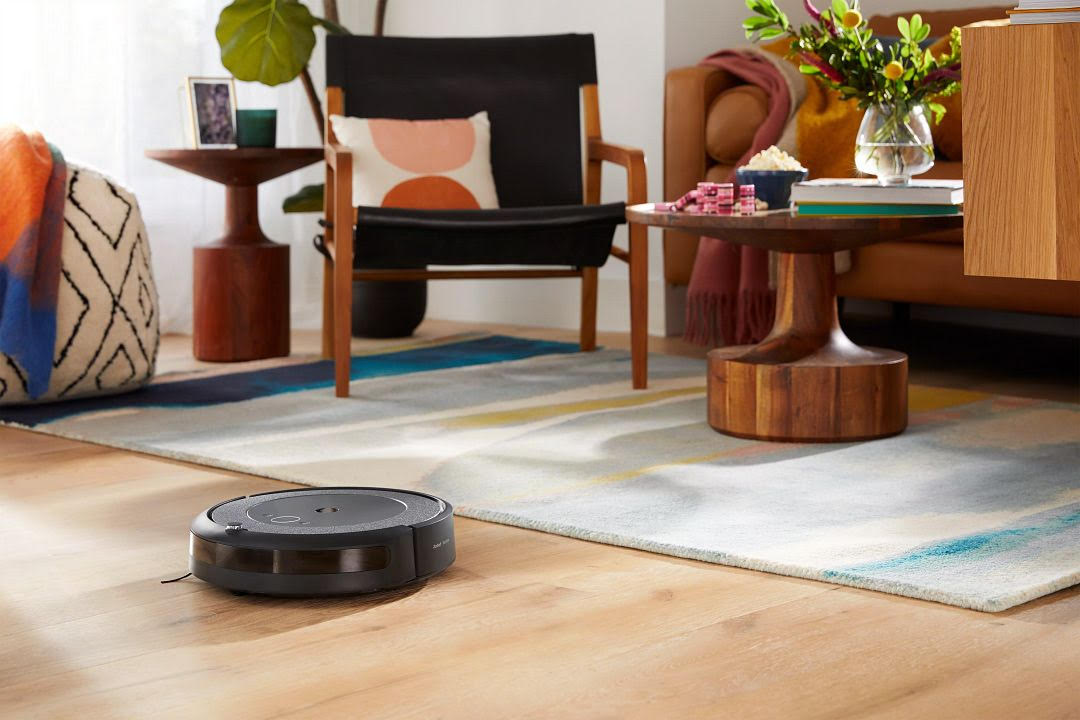Gadget of the Week
Gadget of the Week: Roomba to move
The mid-range edition of the iRobot Roomba is a great cleaner, and makes short work of pet hair, writes ARTHUR GOLDSTUCK.
What is it?
It’s just over a year since the robot vacuum cleaner category took off in South Africa, following the arrival of the market-leading iRobot Roomba brand. Now, the range is expanding, allowing it to meet a wider range of budgets.
However, the iRobot strategy in South Africa appears to be to start with the high-end, and gradullay move down the value chain. This is almost the exact opposite of the strategy adopted by new smartphone brands entering South Africa. They tend to start with the lower mid-range, and then move up the value chain.
The philosophy appears to be that robot vacuums are a high-end purchase, which will be made by more affluent consumers, so they would be targeted first. As a result, the top-of-the-range i7+, j7+ and s9+ models are the most widely available here, along with the i3+, all priced at over R10,000.
In the US market, the 600 series starts as low as the dollar equivalent of R3,600, but is either unavailable or out of stock in South Africa.
Enter the i5. Or, at least, it entered my living space.
My office carpets are covered in pet hair, thanks to several cats and dogs that believe they are paid – or fed – to shed. That makes for intensive wielding of vacuum cleaners, which can be somewhat tiring. The i5 was put to work, and proved its worth over the first few sessions.
The carpet seems cleaner than it has been in the year since the last robot vacuum cleaner was tested here, although that could be a result of innate favouring of robots. What cannot be contradicted is the massive amount of hair it picked up: the bin was overflowing after two cleaning runs, attesting to the stress the animals had placed on the carpet.

The new mid-range Roomba does not come with the automatic cleaning base that differentiated previous higher-end models available in this country, but that also makes it more versatile in terms of placing its tiny docking station. It also means cleaning it out more often.
While it does not have built in voice capabilities, the i5 can be controlled through voice commands, using Google Assistant, Amazon Alexa or Apple Siri. It does, however, need to be linked to the respective smart home apps of the voice tools. One is also at the mercy of the voice assistants’ ability to understand the instructions. Activating the i5 and sending it back home with Google Assistant was no problem but trying to send it on a mapping run tested my patience with bots.
The i5 apparently supports 600 pre-set commands, so one may well learn a new language in the process. Custom commands can also be created.
As with its more expensive siblings, the i5 includes Imprint Smart Mapping, which creates customisable maps and enables one to send the robot to clean specific rooms. One can then create cleaning routines based on preferred schedules, rooms and automations.
It allegedly navigates the home in neat rows, “using state-of-the-art floor tracking sensors to vacuum hardwood and carpet”. The average home is not furnished in neat rows, however, and one finds the iRobot learning its way around obstacles – many of which have an annoying habit of being moved around. Who wants to bother remembering how furniture was rearranged the last time the i5 ventured out?
While mapping may appear to be the most useful feature of a high-end robot vacuum, it is its Recharge and Resume function that is most practical. When its charge begins to fade after a gruelling session, it returns to the charging station, recharges, and goes back to finish the job.
It’s cleaning efficiency is powered by Dual Multi-Surface Rubber Brushes and Power-Lifting Suction that pulls in dirt, debris, and pet hair from their hiding places, while an Edge-Sweeping Brush takes care of surface details.
What does it cost?
R7,599 from iRobot.co.za and selected retailers.
Why does it matter?
It was a big deal when iRobot South Africa announced the new Roomba i5 and i5+ in October., because the basic edition costs less than R8,000, and is what one might term a mid-range Roomba. Coincidentally, pricing of iRobots matches that for mid- and high-end smartphones. Perhaps we can expect “entry-level” pricing in the coming year?
What are the biggest negatives?
· The Clean Base Automatic Dirt Disposal is sold separately.
· Docking station must be moved when placing Roomba manually in separate rooms.
· The iRobot app does not offer a comprehensive set of robot management tools.
What are the biggest positives?
· Easy set-up and quick start to begin its first job.
· Cleans thoroughly.
· Effectively navigates varied surfaces like mats on carpets and slightly raised areas.
* Arthur Goldstuck is founder of World Wide Worx and editor-in-chief of Gadget.co.za. Follow him on Twitter on @art2gee



















